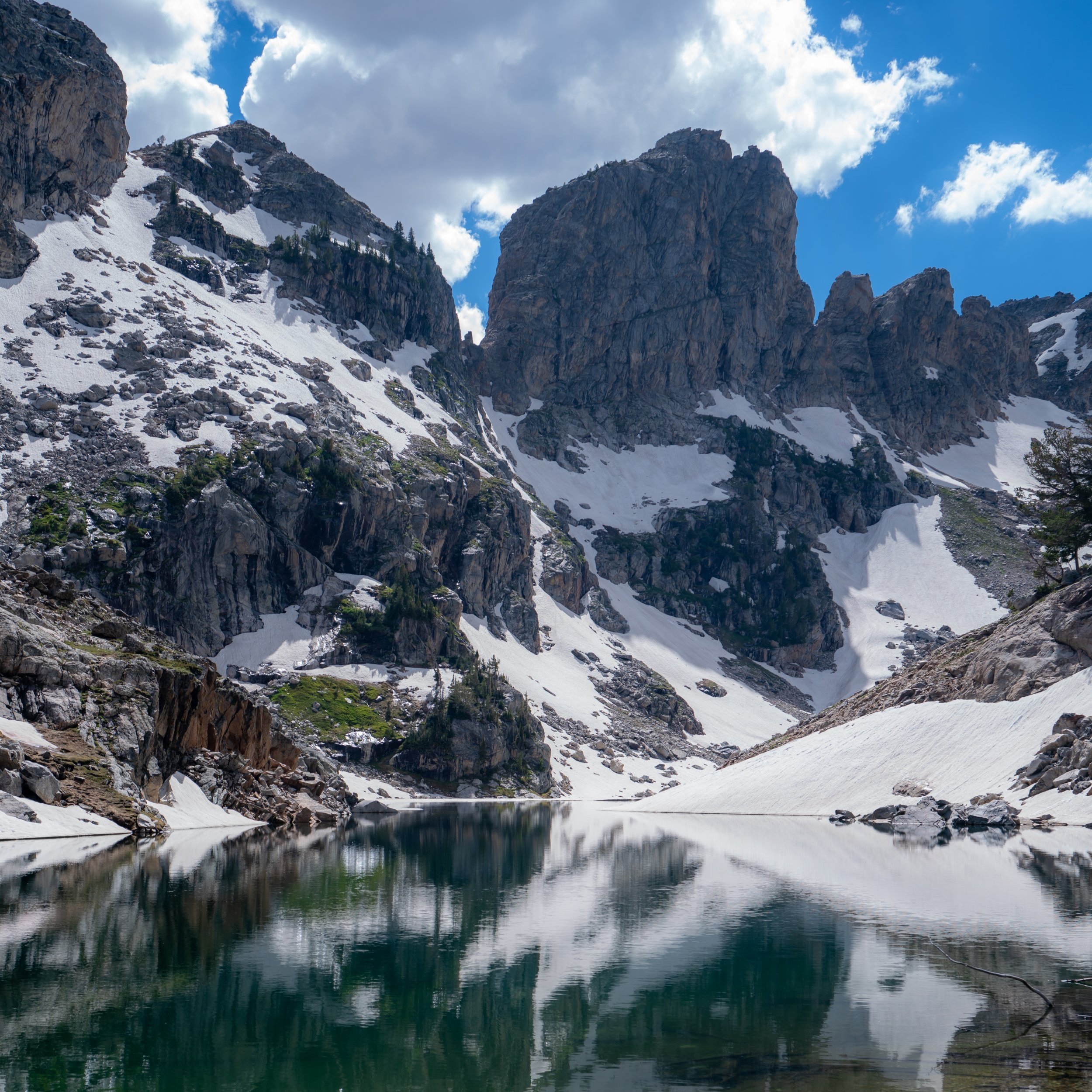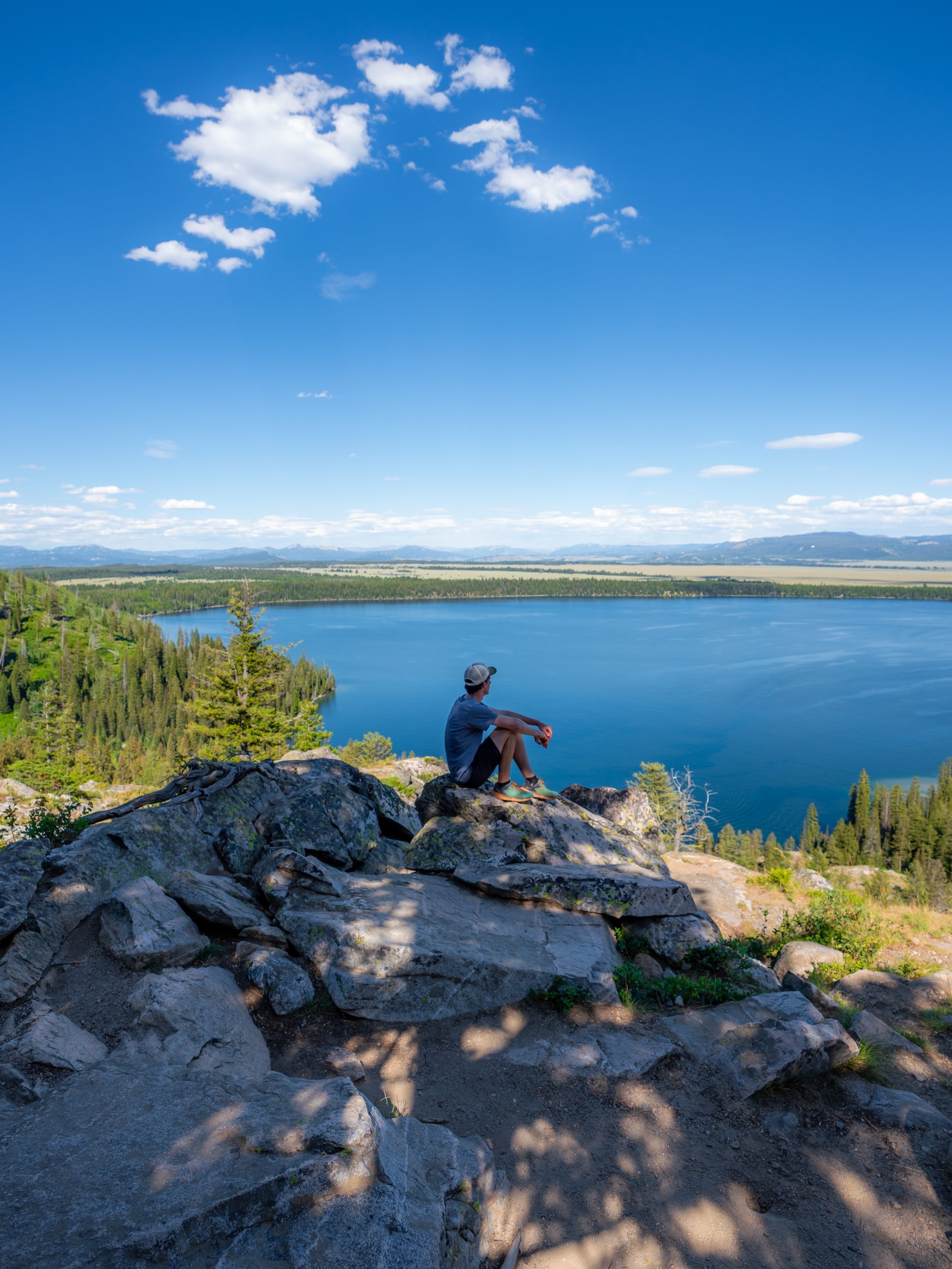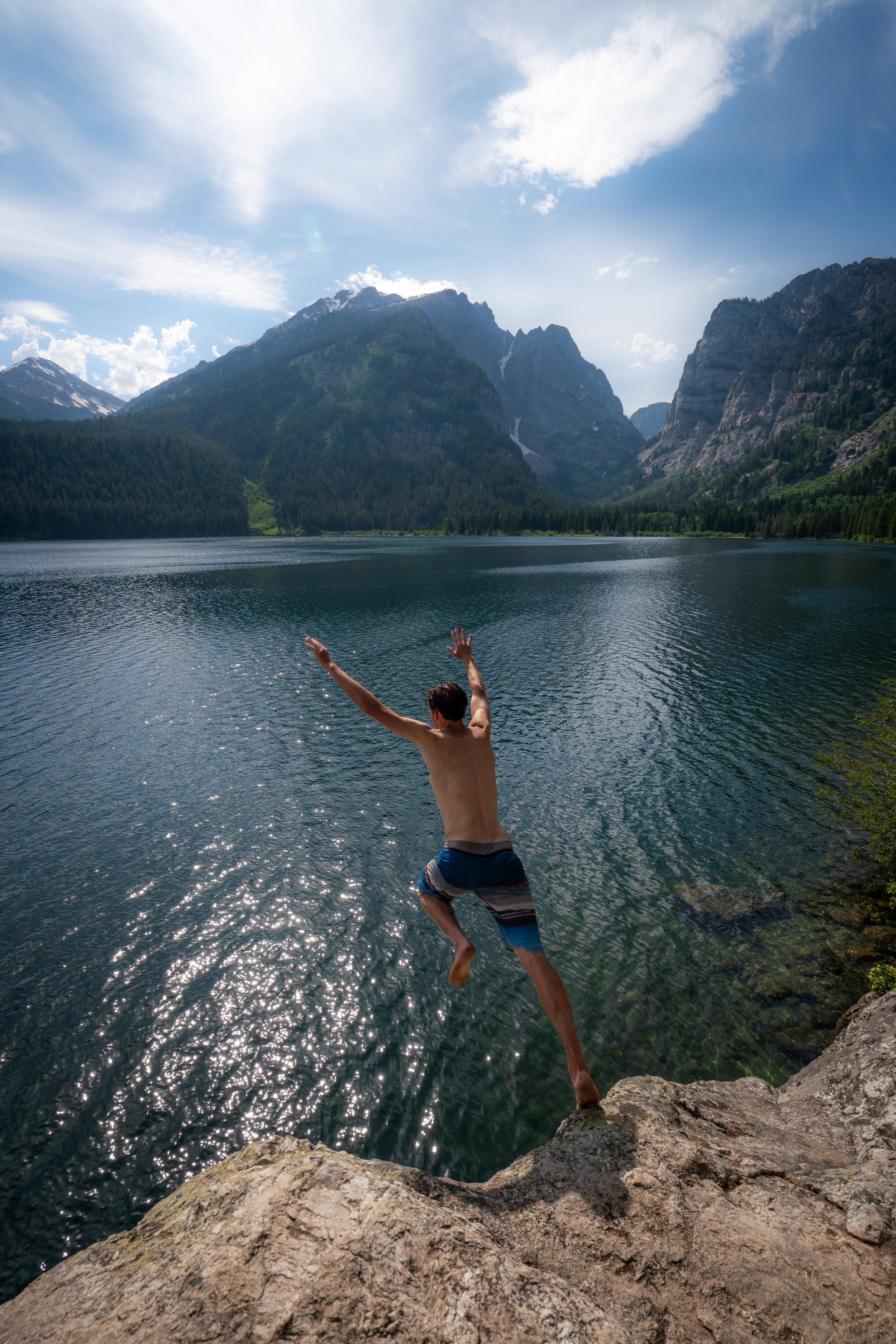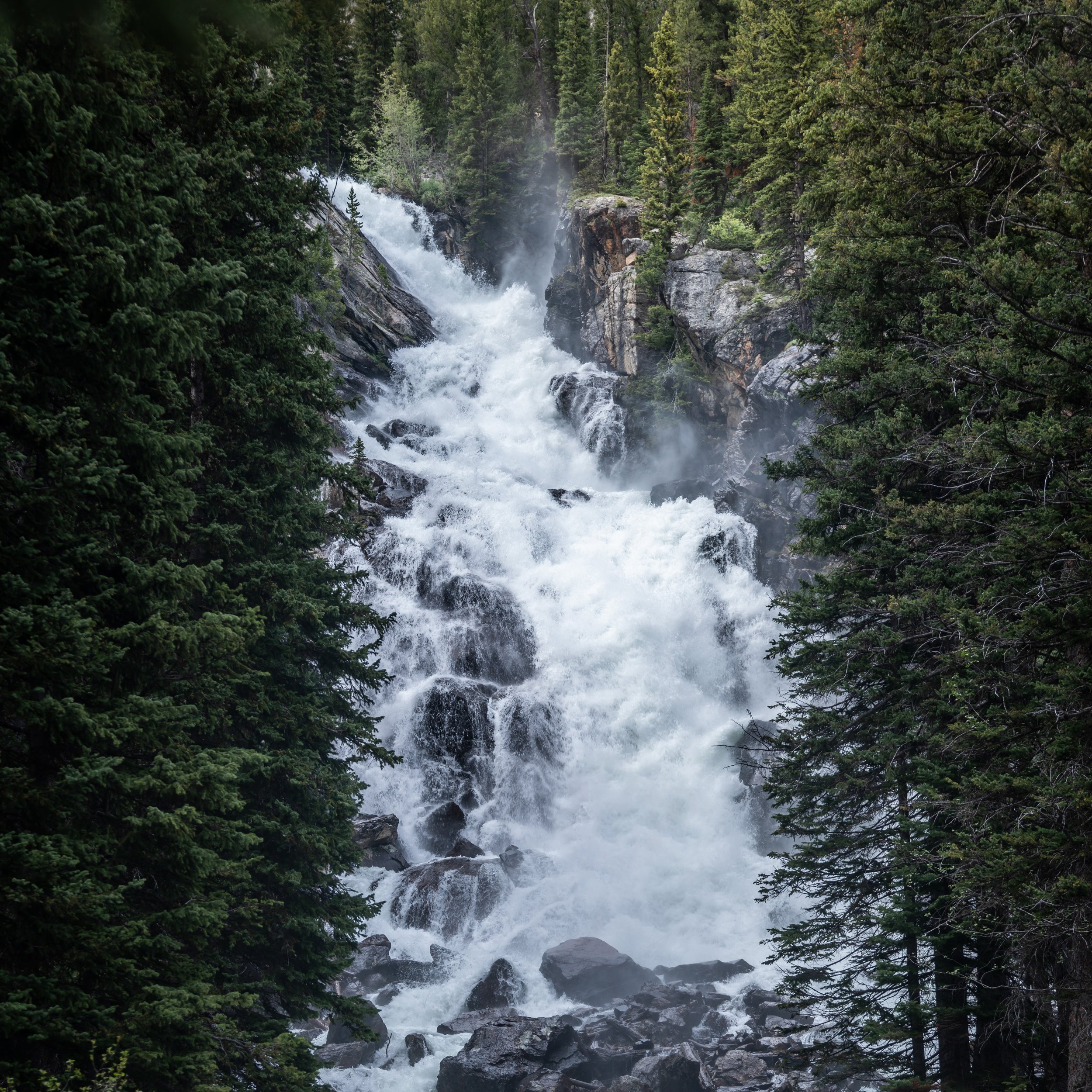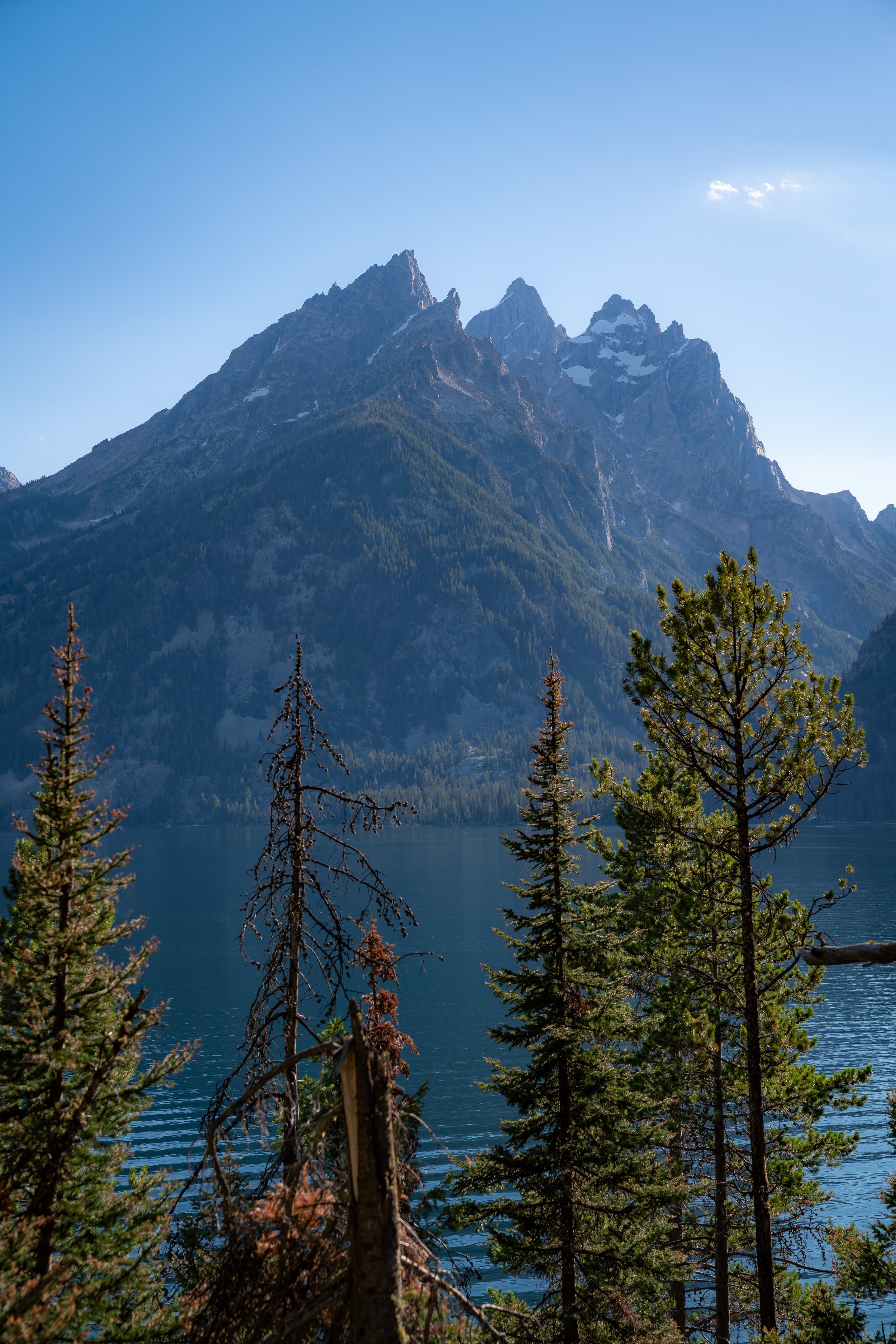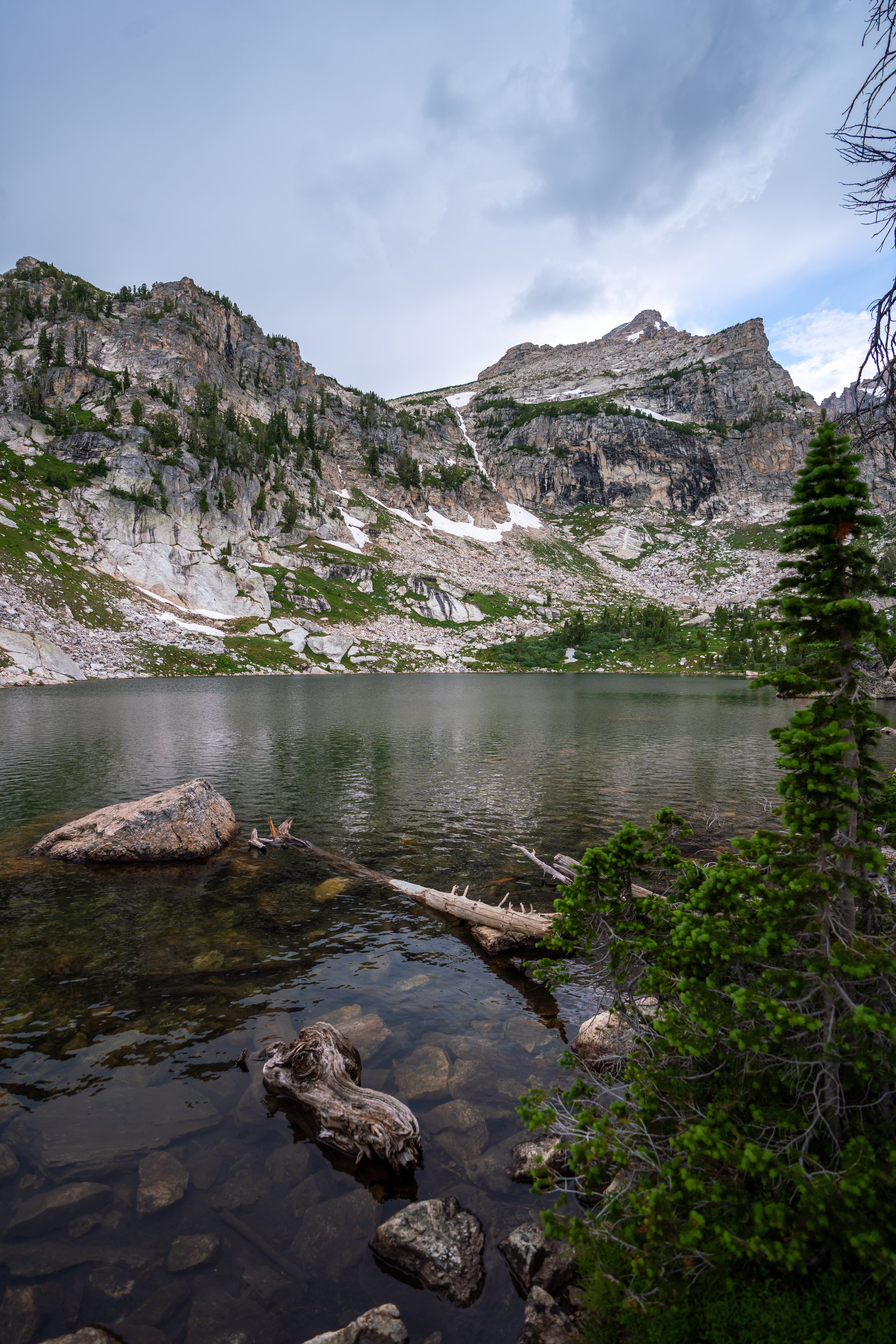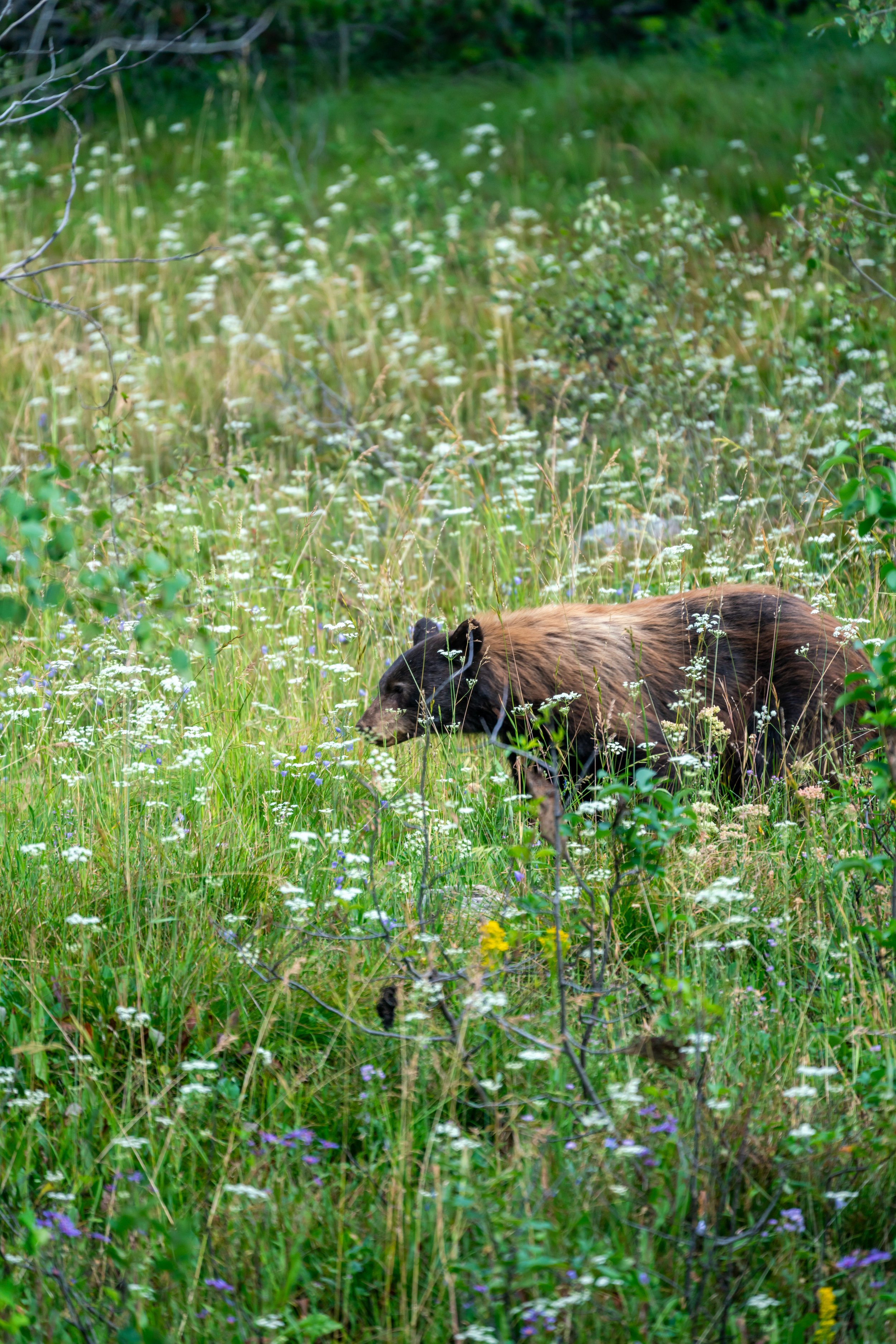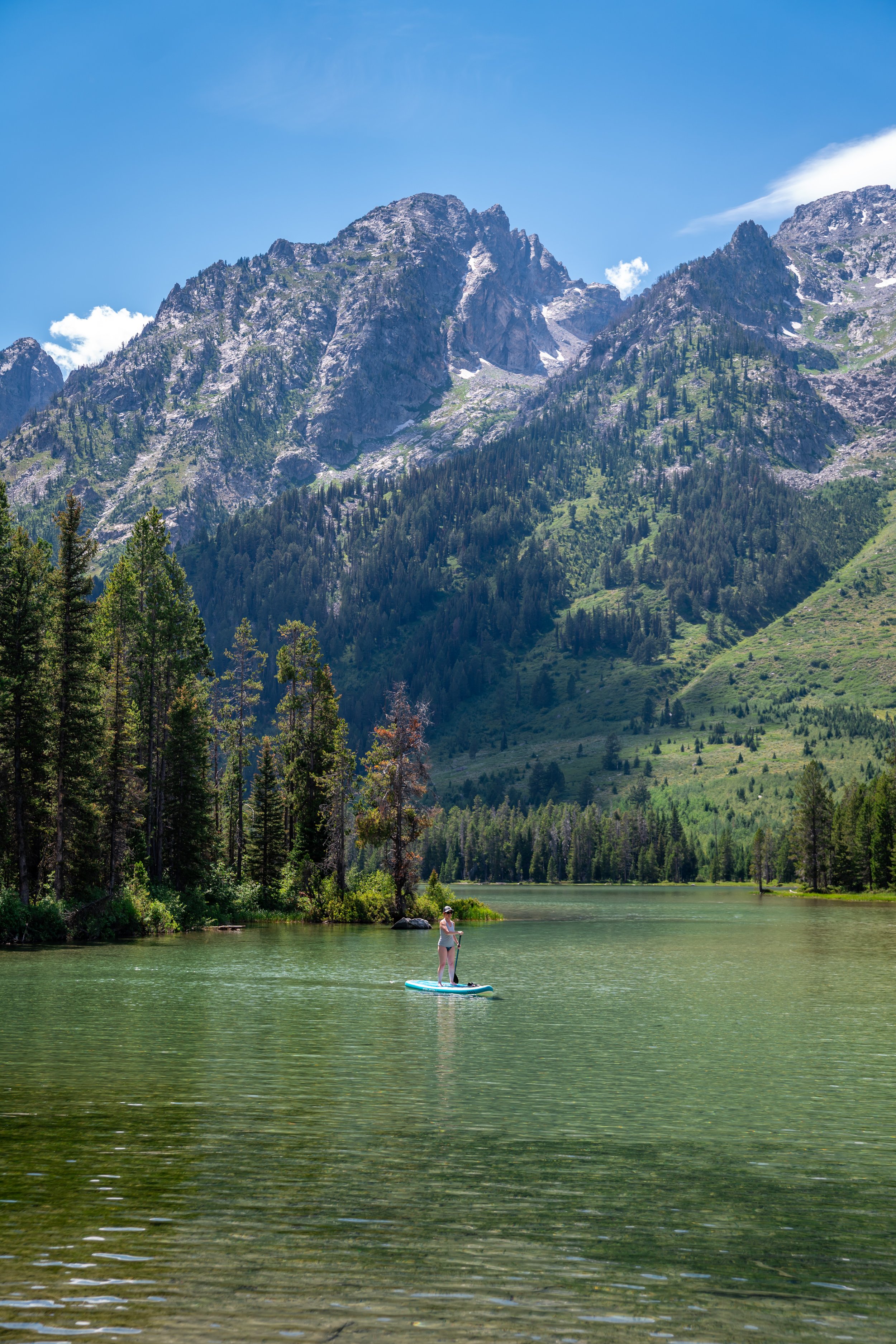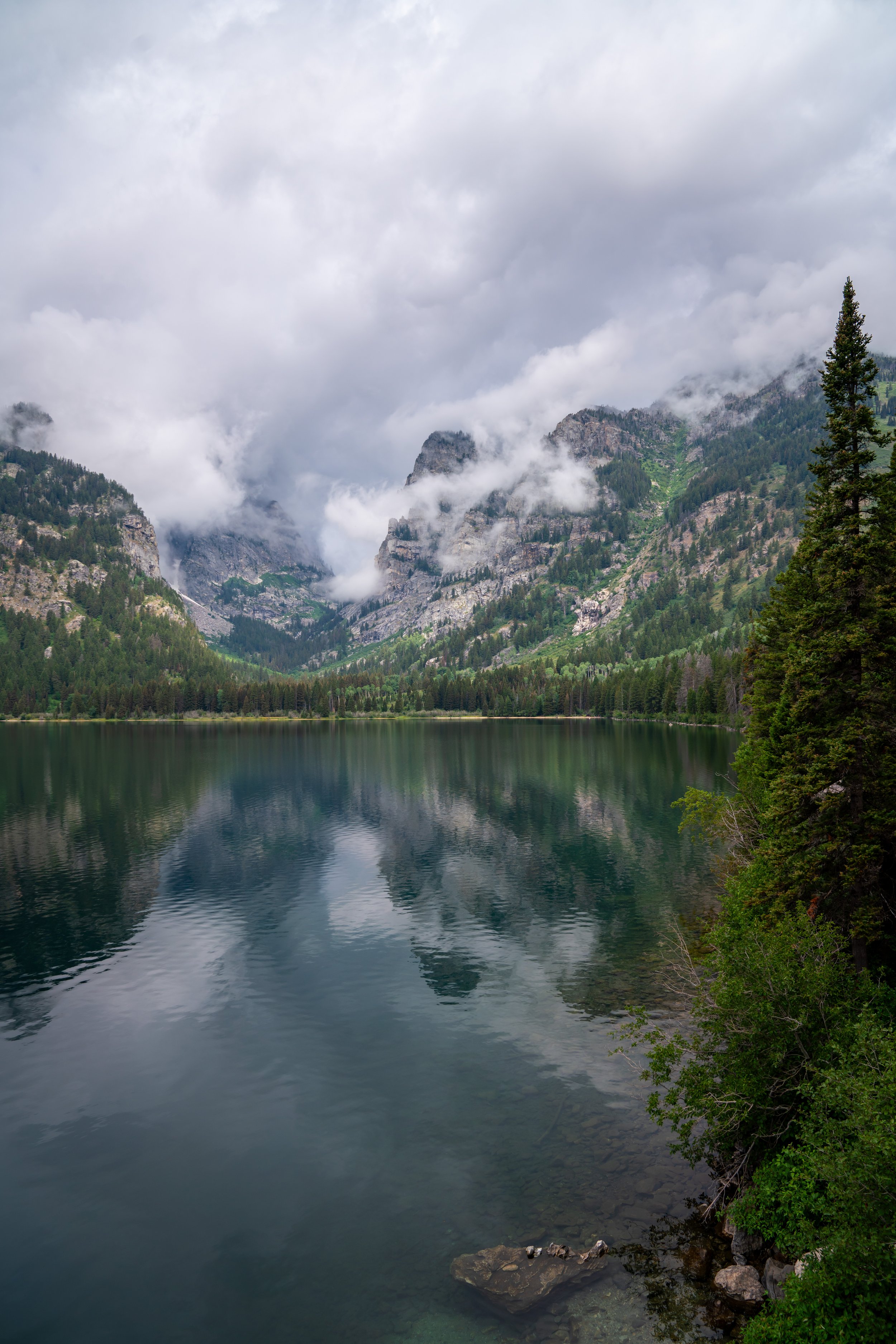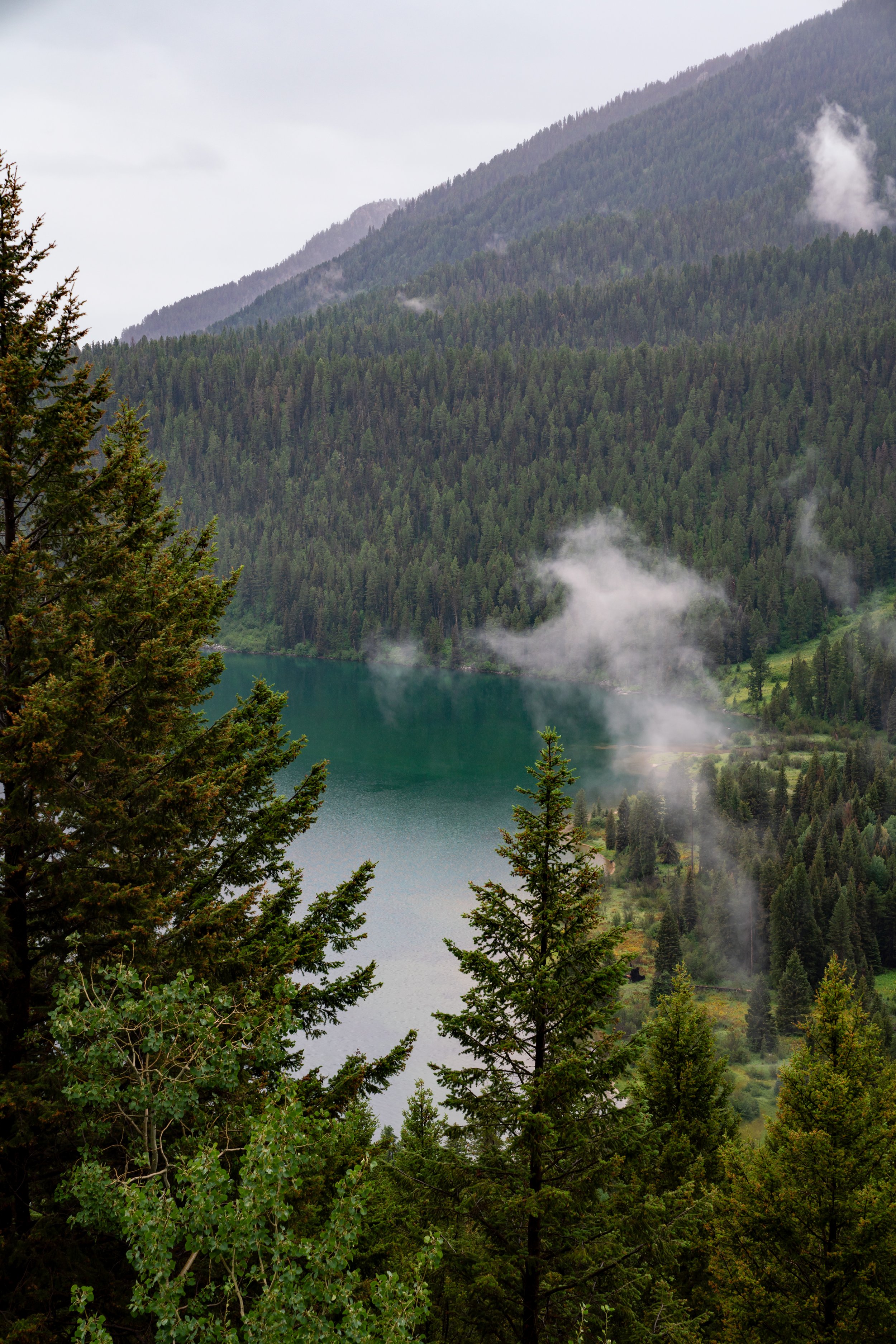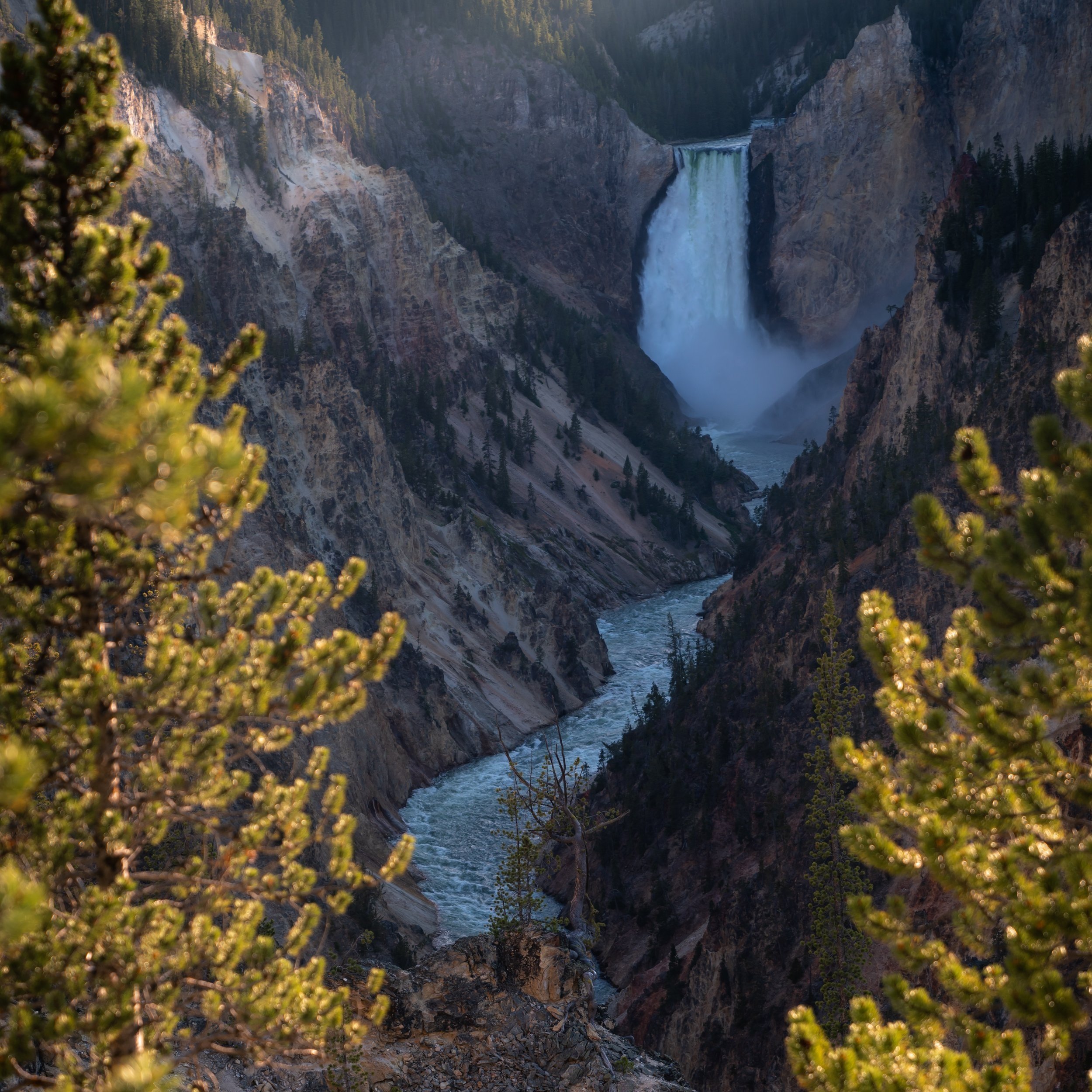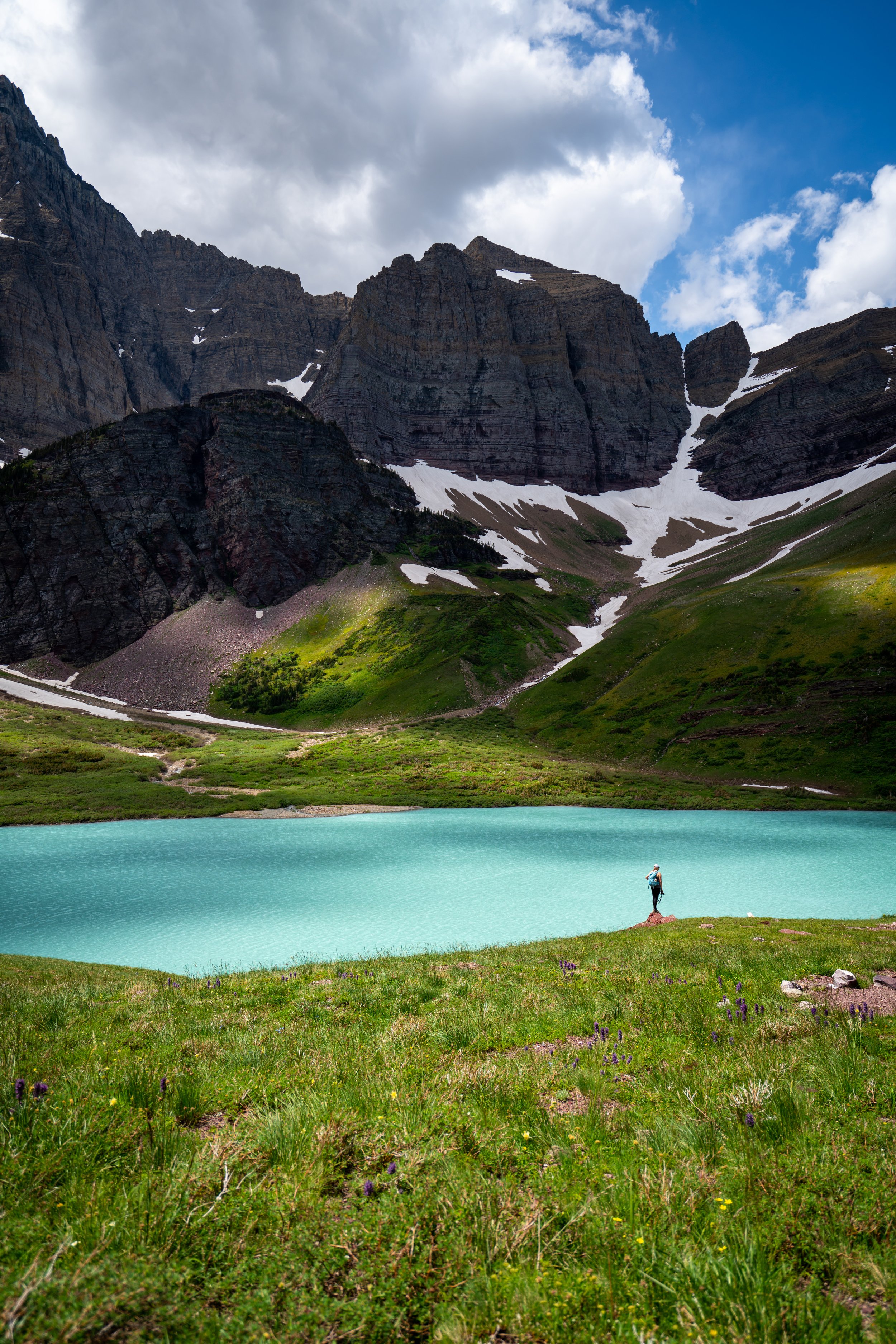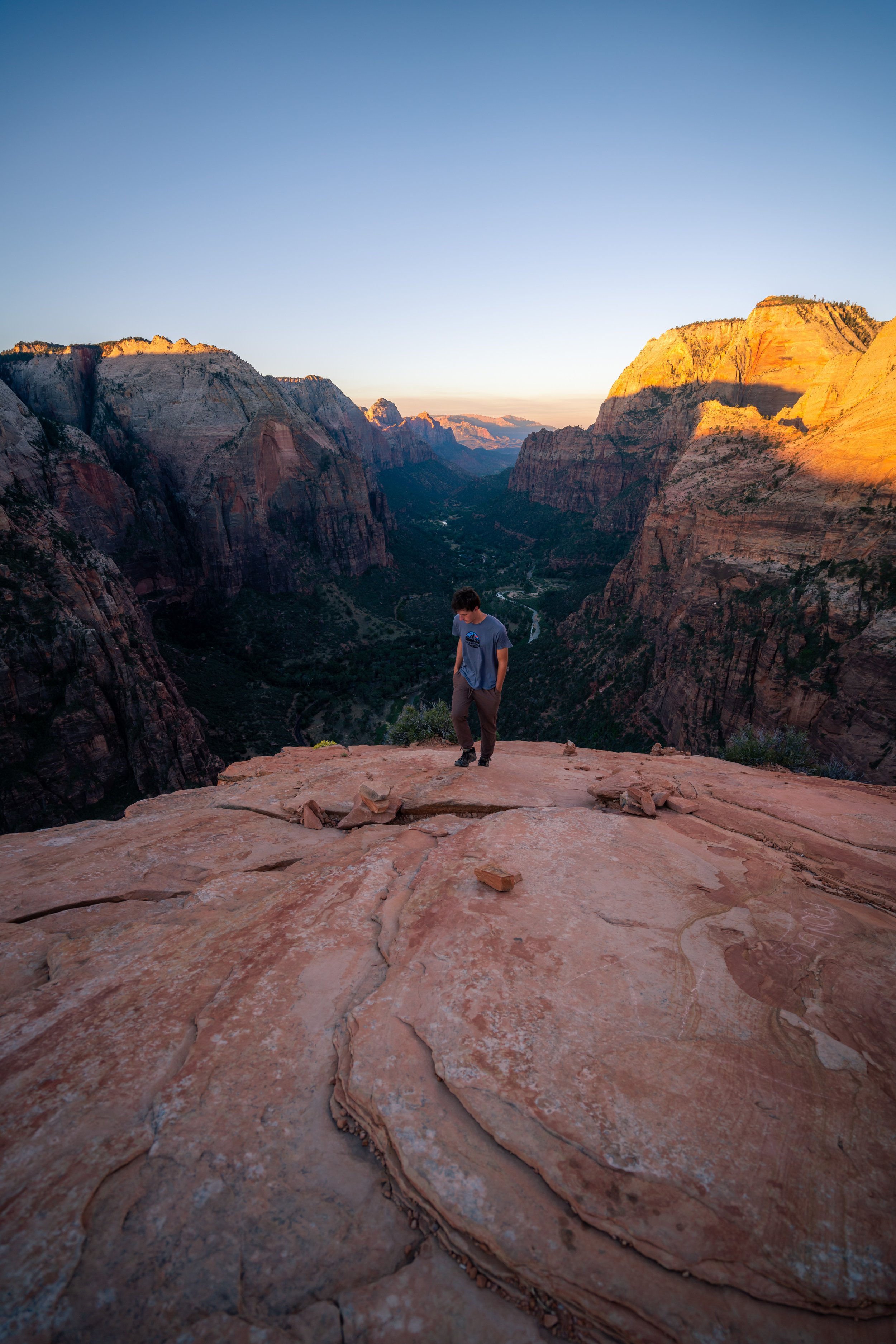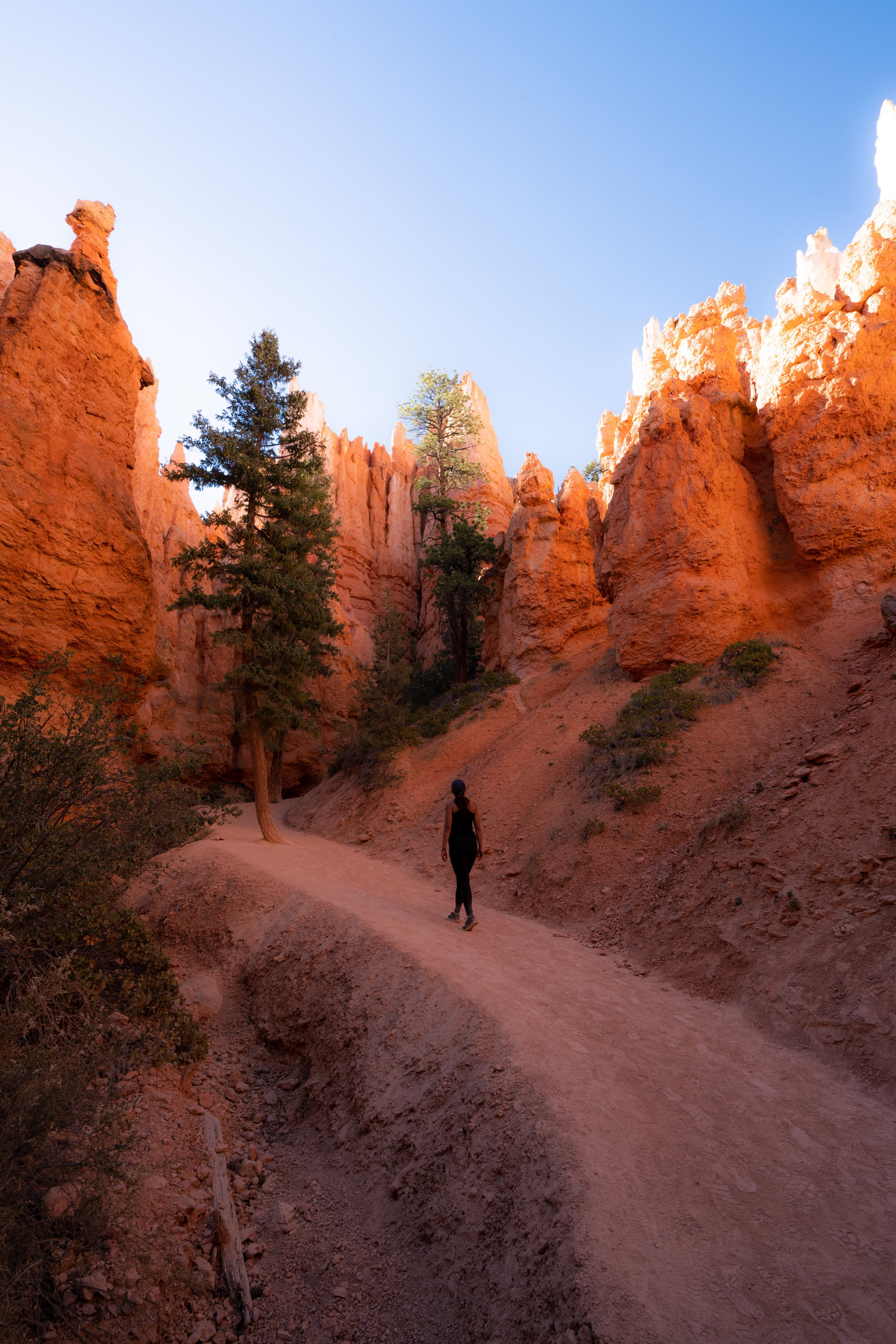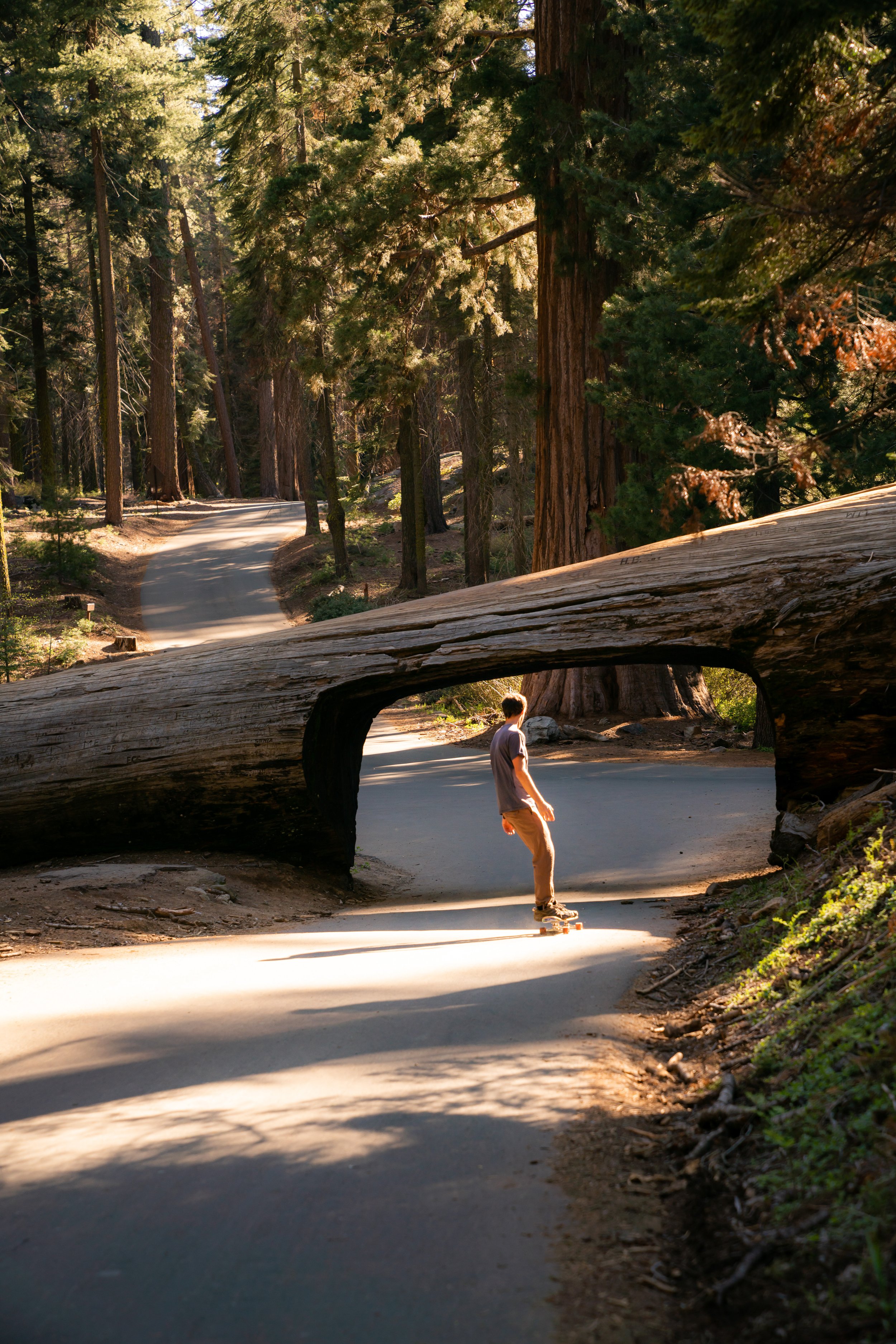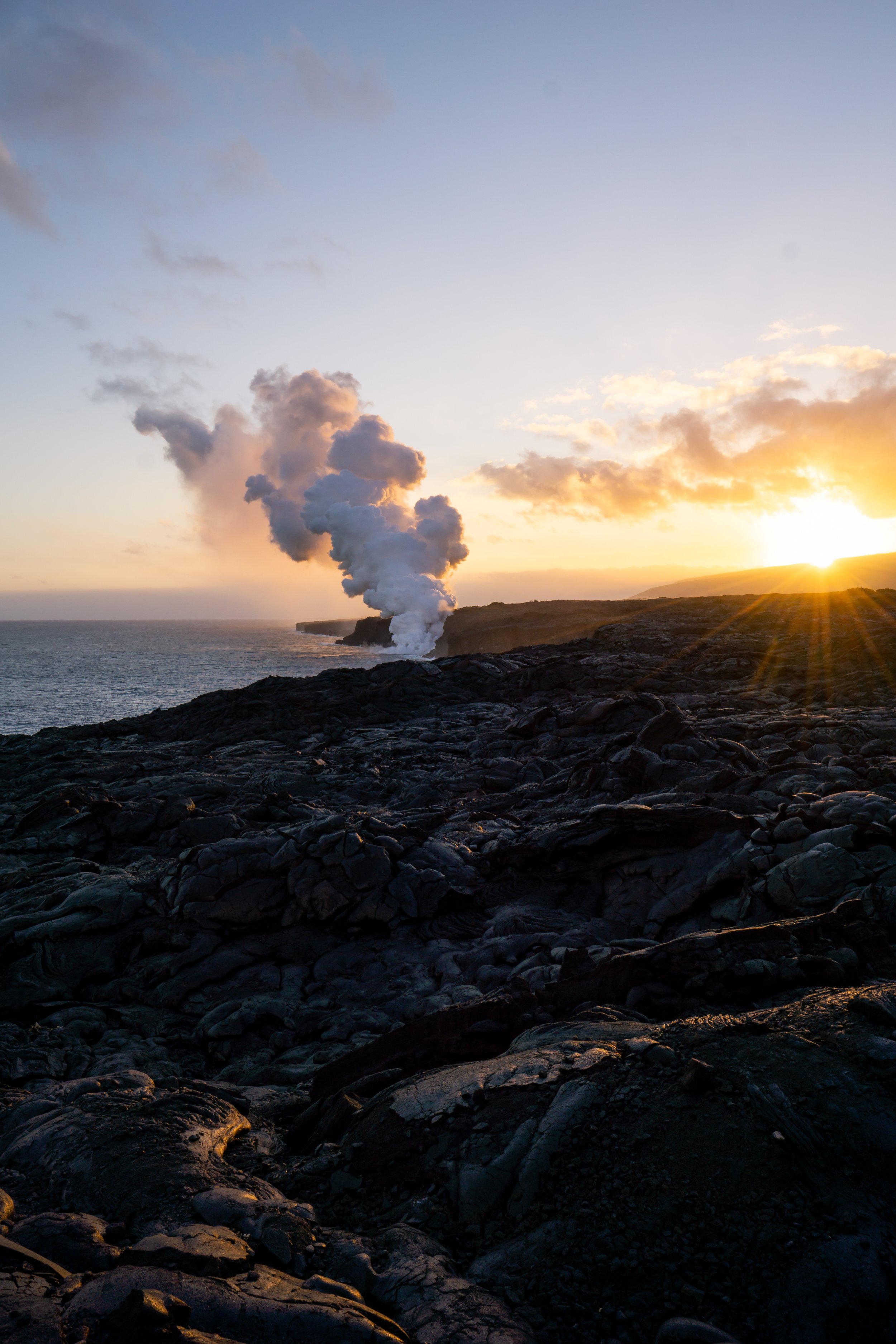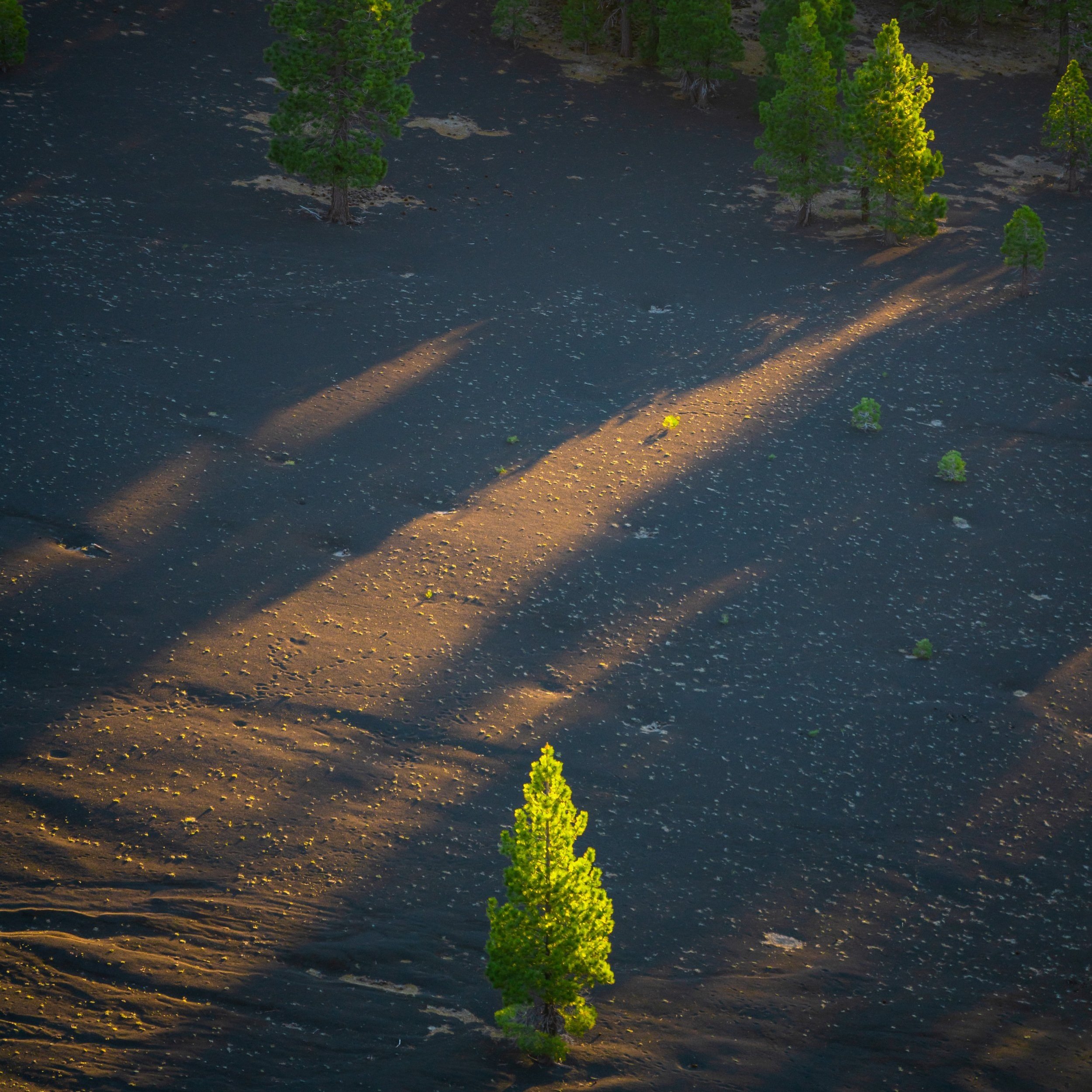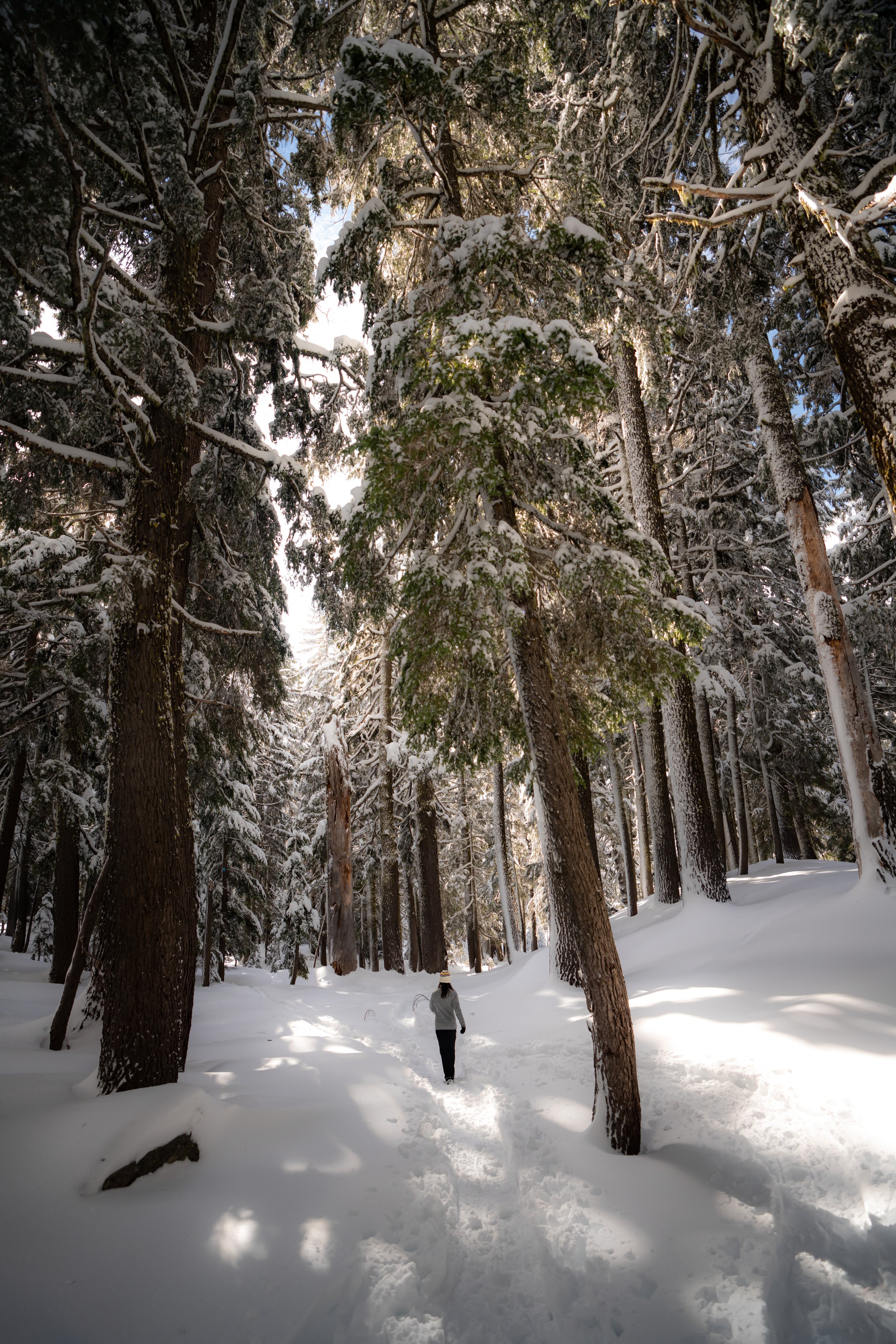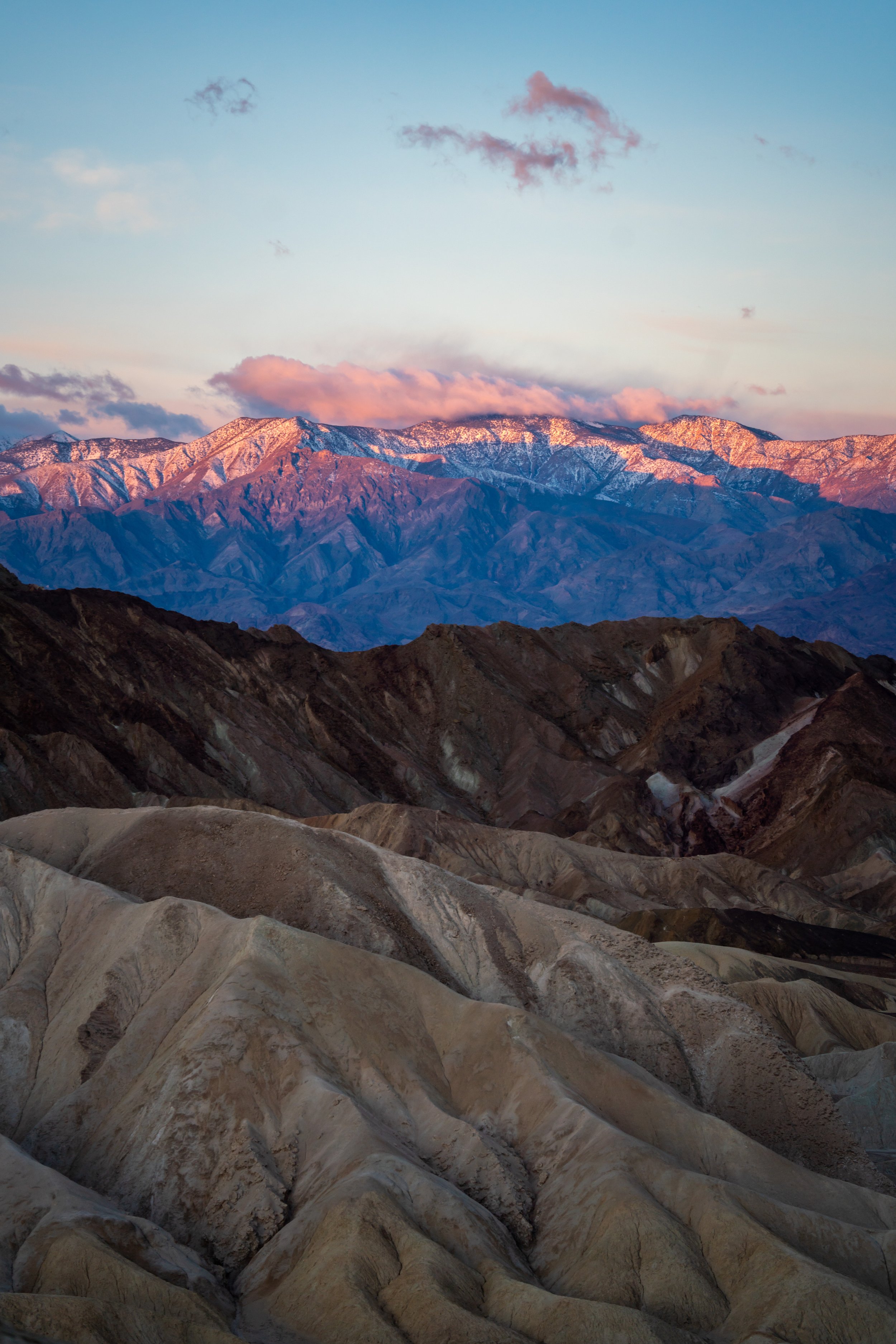Hiking the Delta Lake Trail via Lupine Meadows in Grand Teton National Park
Distance: 7.5 miles / 12.1 km
The Delta Lake Trail is the best of the best in Grand Teton National Park!
By this, I mean that Delta Lake is what the Beehive Trail is to Acadia National Park or what Angels Landing is to Zion National Park.
This is to say that Delta Lake is easily one of the most beautiful day hikes in Grand Teton National Park, and for this reason, the Delta Lake Trail via Lupine Meadows is also one of the most popular adventures near Jackson, Wyoming.
That being said, I do not believe the hike up the Lupine Meadows Trail and the steep scramble up to Delta Lake is a hike for all people, of all abilities. The hike up to Delta Lake is steep, requires some route-finding, and the off-trail scramble at the end makes Delta Lake one of the more challenging day hikes in the park.
However, if you’re up for the challenge, the Delta Lake Trail is easily one of the best and most beautiful day hikes in Grand Teton—especially at sunrise!
Delta Lake Trailhead Parking
The hike to Delta Lake has inevitably made the Lupine Meadows Trailhead one of the most popular trailheads within Grand Teton National Park.
Therefore, I recommend arriving early because, as parking near the trailhead can be extremely difficult by midmorning during the busy summer travel season.
Google Maps Directions: Lupine Meadows Trailhead
Hiking Checklist - Yellowstone-Tetons
Here is a complete list of must-have things that you will want for any hike in the Yellowstone-Teton area.
Bear Spray & Holster - If you aren’t flying, don’t rent bear spray! It’s a waste of money. Prepare ahead of time by buying your own, as this may be one of the most important items on this list.
Osprey 3L Water Bladder - The Osprey 3L water bladder is the most universal hiking and backpacking water bladder on the market, and it’s my go-to because of the slide-off seal that allows it to be quickly filled from the top. Additionally, individual parts are easily replaceable, such as the bite valve.
Black Diamond Headlamp - Personally, I recommend the Black Diamond Storm because it is one of the brightest, lightest, and longest-lasting headlamps on the market—and trust me, the weight-to-battery-life ratio really does matter!
Hiking / Trail Running Shoes - Depending on the type of trail, I prefer to use either the Keen Targhee for longer, more rugged hiking or the HOKA Zinal Trail-Running Shoe for lighter, less intense trails. In either case, both have been amazing to me for many years across countless environments, and both can be found in men’s and women’s sizes. - (Men’s Keen / Women’s Keen) (Men’s HOKA / Women’s HOKA)
Blister / Heel Protectors - I swear by these cheap, amazing heel protectors to prevent blisters for nearly every kind of hiking and backpacking that I do!
Waterproof Rain Shell - You never know when it may rain, and I’ve learned over the years that a rain shell is far better than a rain jacket. By this, I mean that it’s best to have something that the water will roll right off of, which is why I recommend the Patagonia Torrentshell 3L available in both men’s and women’s sizes.
High SPF Sunscreen - Packing high-SPF sunscreen is a must for long days outside!
Hiking the Lupine Meadows Trail to Delta Lake
The hike up to Delta Lake begins on the Lupine Meadows Trail, which is a very popular trailhead for a number of climbing routes up Garnet Canyon, as well as Surprise and Amphitheater Lakes.
Our group and others saw multiple bears on just this one short day hike, which at one point separated us as a group when a bear on the switchbacks came between us.
I say this to say: take the hiking checklist above seriously, and always hike with bear spray!
After only 0.5 miles (0.8 km) into the hike, the Lupine Meadows Trail will noticeably start gaining elevation, which will continue for the entire distance up to Delta Lake.
At about 1.2 miles (1.9 km), the Delta Lake Trail will start following a ridge before reaching the switchbacks on the Lupine Meadows Trail to come.
Valley Trail Junction
The Valley Trail is first junction that the Lupine Meadows Trail will come to, but to get to Delta Lake, go right to start the switchbacks up the trail.
In my experience, I have never seen another hiker on the Lupine Meadows Trail that was there for the purpose of hiking the Valley Trail.
After the Valley Trail Junction, the Delta Lake Trail will climb a series of six switchbacks before reaching the Delta Lake turnoff.
This may be a good idea to count out these switchbacks in case you’re unsure where the turn to Delta Lake is, as the junction is unmarked.
It was around this area of the switchbacks that we came across a brown bear roaming through the bushes.
This is not to say that you are likely to see them here, as I have seen them elsewhere on the Lupine Meadows Trail before.
Garnet Canyon Junction
Unlike the Valley Trail, Garnet Canyon is one of the more popular junctions on the Lupine Meadows Trail because of the climbs that you can get to, like the Middle and Grand Teton.
Continue straight on the Lupine Meadows Trail, and don’t treat the Garnet Canyon Junction like a switchback.
Delta Lake Junction
Then, at the top of the sixth switchback or about 3.3 miles (5.3 km) into the hike, the trail to Delta Lake splits off of the Lupine Meadows Trail.
This is also where the hiking gets significantly more difficult and steep, which is why I said in the beginning that the Delta Lake Trail is not for all people of all abilities.
On top of this, the trail to Delta Lake is what the National Park Service calls a “social trail”, meaning that this steep stretch to Delta Lake is not maintained by the agency.
That being said, I have noticed some erosion mitigating measures put in place, like the steps at the junction, because of the sheer popularity of the Delta Lake Trail.
After the junction, you will want to follow the best trail you see fit up the steep scramble to Delta Lake.
One route may be more straightforward than another, but know that since this is not an official trail, hikers have made many different small trails up to Delta Lake.
Yes, it’s really that steep!
At this section below the lake, I found it easier to hike over to the right around the cliff rather than continue up to the left.
Eventually, the trail will level out, which is how to know that you’re close to Delta Lake!
Delta Lake
After roughly 3.8 miles (6.1 km), the steep trail finally reaches Delta Lake!
That said, the beautiful turquoise-blue waters of Delta Lake can make for a fun, freezing-cold place to swim and enjoy the sun on a hot summer day. However, be careful if you decide to jump in, as the glacial waters are typically not very clear, meaning the depth can be misleading.
On a different note, you can see the beautiful Teton Glacier just below the Grand Teton if you look up to the right of the peak!
Warning
Afternoon thunderstorms in high Mountain West areas, such as this, are a serious concern during the summer monsoon season.
Even if the weather forecast doesn’t predict any storms, I can tell you from personal experience that they may show up out of nowhere and can put you and your entire group in a very dangerous situation.
I say this to emphasize the importance of turning around at the first sign of lightning, thunder, or even heavy cloud buildup. However, if you ever get caught in a storm unsuspectingly, follow the steps linked below to reduce the risk of getting struck.
U.S. Forest Service: Lightning Safety Tips
More Grand Teton Adventures
If you’re interested in reading about some more amazing adventures within Grand Teton National Park, check out my separate posts below!
Best Way to Find Places to Stay!
Wherever I travel, I love to start my search for places to stay on VRBO.
Even if I don’t end up booking through them, I think it’s one of the best ways to see what’s in the area!
Best Way to Book Rental Cars!
I travel quite a bit, and I know firsthand that finding a good rental car deal can be a challenge, but that’s why I recommend comparing all of your options with Discover Cars.
In short, Discover Cars is a well-known, reputable business that allows you to search for the best deal across companies, and they have the best full-refund cancellation policy I’ve ever seen, valid up to 72, or sometimes even 48, hours prior to your reservation!
Book Here: Discover Cars
Safety
From personal experience, I’ve seen that the Yellowstone-Teton area has one of the highest Grizzly Bear densities in the country. Even on the popular trails, you need to be hiking with bear spray and know how to react in the event of a Black or Grizzly Bear encounter.
Aside from wildlife, Wyoming, like any Mountain West state, is known for its violent afternoon thunderstorms, which are more typical in the warmer summer months than other times of the year.
That said, it’s important to check the local forecast before setting off on any adventure, as lightning strikes are not uncommon in and near mountain ranges across the West. I have personally been knocked to the ground by a strike that hit near me in the past, and I confidently say that it’s an experience you don’t want to live through. This is why I highly recommend checking Mountain Forecast for any high-elevation adventures you may be interested in—especially when climbing a summit.
Finally, know that when micro-spikes are necessary for an early-season adventure, micro-spikes are never supposed to be a substitute for conditions that require crampons.
As always, find the most up-to-date information and conditions on the official Yellowstone and Grand Teton National Park websites.
National Park Service: Grand Teton National Park / Yellowstone National Park
U.S. National Parks Pass
Did you know that the same America the Beautiful Pass that grants access to all 63 U.S. National Parks can be purchased in advance at REI?
Yes, you can save time when you arrive by purchasing your National Park pass, along with your other outdoor gear, at REI before traveling to the park!
More U.S. National Parks
If you’d like to read more about some of my best recommendations when visiting other U.S. National Parks, check out some of my other posts below!
Disclaimer
All information provided on this blog is for informational purposes only and is not intended to be a substitute for information or advice from qualified professionals or managing agencies.
Noah Lang Photography LLC makes no representations or warranties regarding the accuracy or completeness of the information provided here, and readers should use their own discretion, judgement, and seek professional advice where it is appropriate.
Furthermore, Noah Lang Photography LLC shall not be held responsible for any injuries, lost individuals, or legal issues arising from the use of information provided on this website, and if applicable, the above safety disclaimer should be referenced to provide a generic overview of the risks involved.
All said, the content on this blog is for the sole use of Noah Lang Photography LLC, and unauthorized use or reproduction of this content is strictly prohibited.
Disclosure
This post is not sponsored.
However, some of the links in this post are affiliate links, which means that I may earn a small commission if a purchase is made through one of those links. This commission comes at no additional cost to you, and I only recommend products that I personally use and believe will add value to my readers. Thank you for your support, which enables me to continue creating more!
To read the full privacy policy, click here.

About This Blog
Noah Lang Photography, also known as @noahawaii, is 100% reader-supported!
I do not accept guest articles or sponsored content of any kind on my blog, which is why, if you enjoy the outdoor and travel content I create, please consider buying me a coffee!
I appreciate your support, which helps me continue to keep this blog alive!














